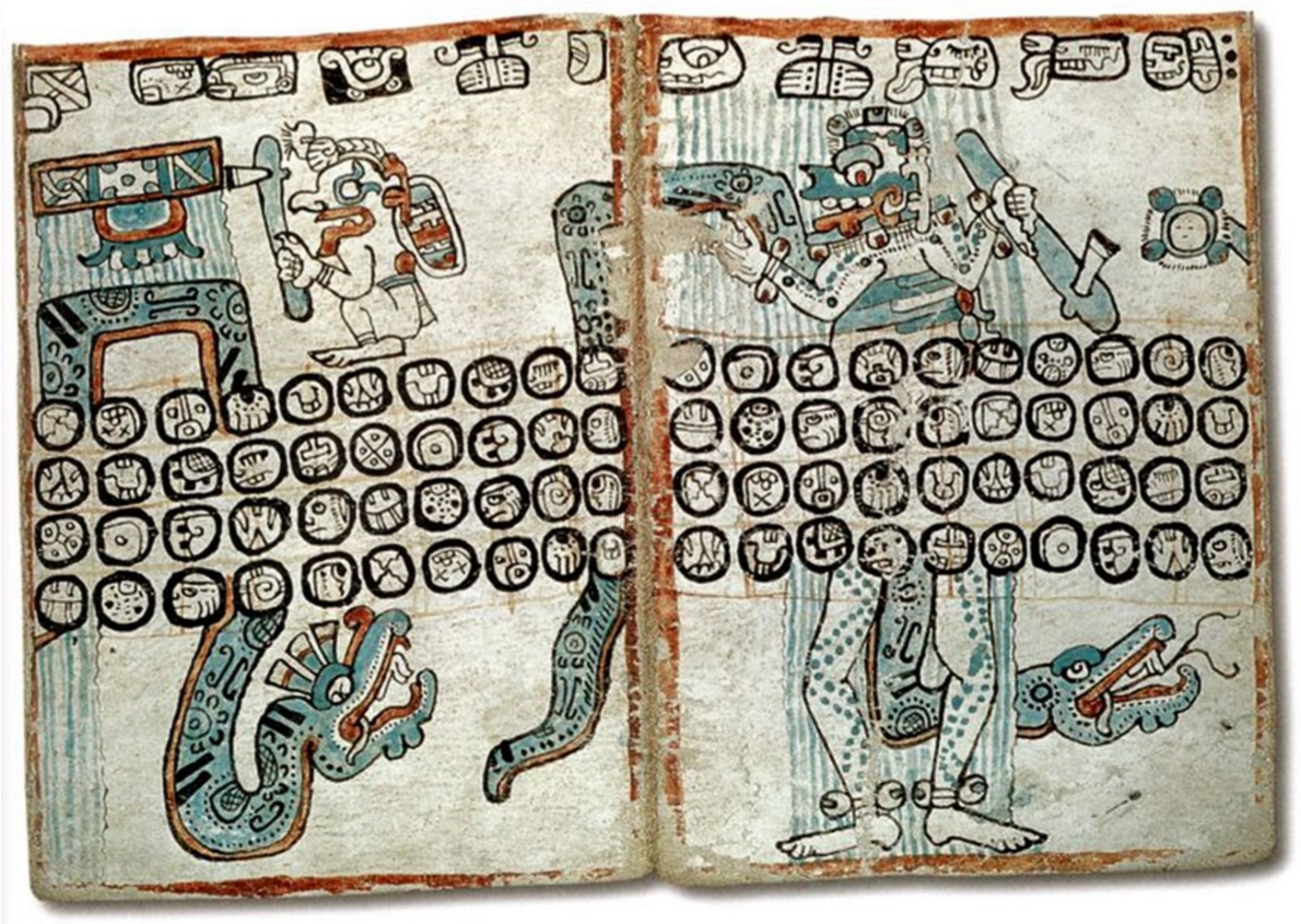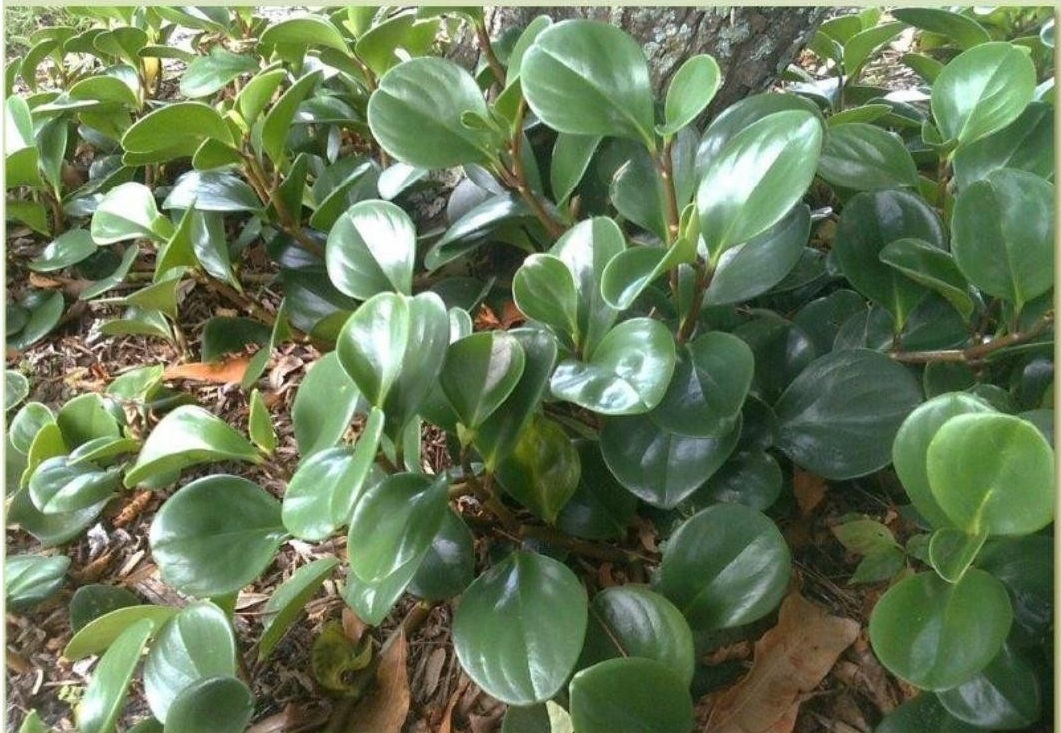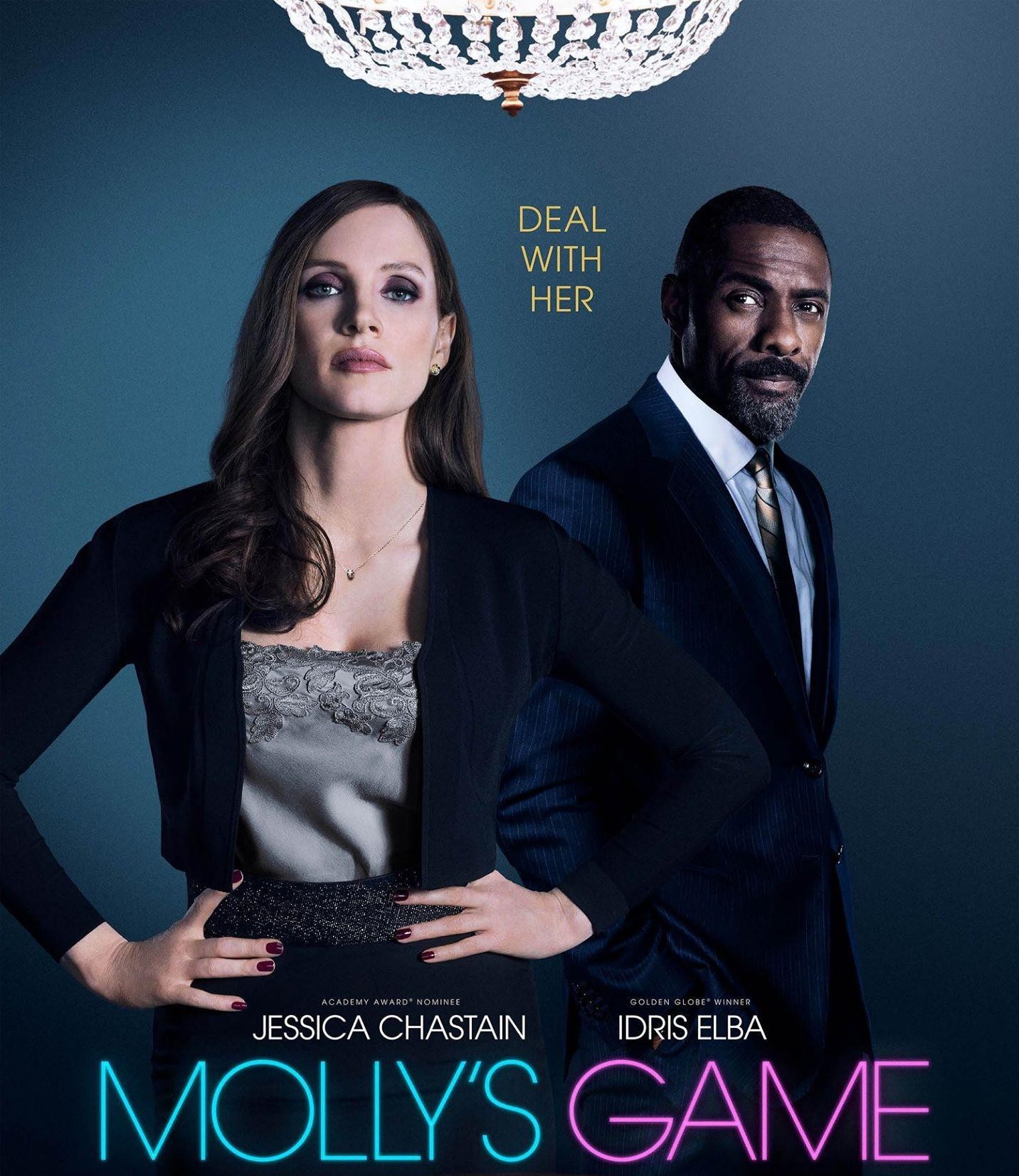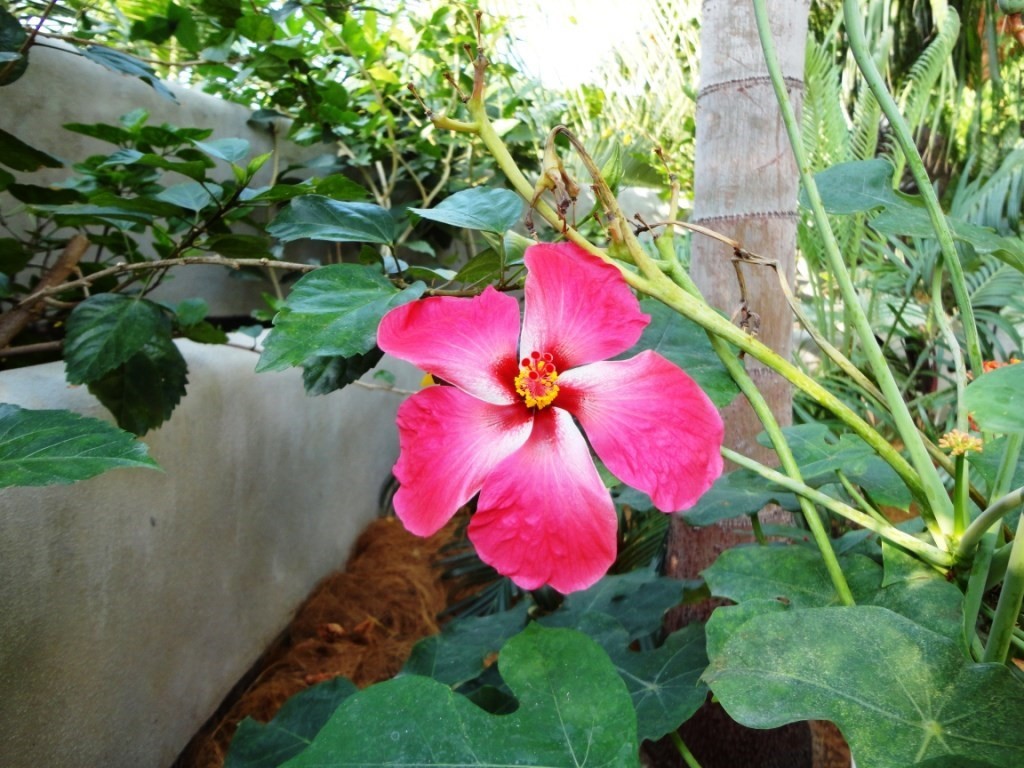By Kirby Vickery from the December 2018 Edition
I have to tell you that Popol Vuh is the most intriguing piece of Mesoamerican literature I have ever looked into. The original has been lost in time, partly because it was handed down from father to son for generations before finally being written down, even in the language of the Maya. Then, the only copy known to exist was lost after it was translated into Spanish.
The history of the translations (yes, there are many) is every bit as intriguing as the reading and the history of the book itself. Throwing Popol Vuh up into Google yields about two and a half million hits. True, some of the sites are about a Spanish bar or supposed really, great Mayan restaurant somewhere else. But, the complicated story of the reading of the book into several languages including English, as well as the translation’s own history, is convoluted and complex to say the least.
By the grace of the editors of the Manzanillo Sun, I shall stick to the basic facts concerning the publication itself. But, if anyone out there has an interest, I can tell you that the story of this publication, and it’s history, is well worth following through the mazes of the internet, and then some. – K. Vickery, 29 Oct 2018.
An example of Mayan writing:
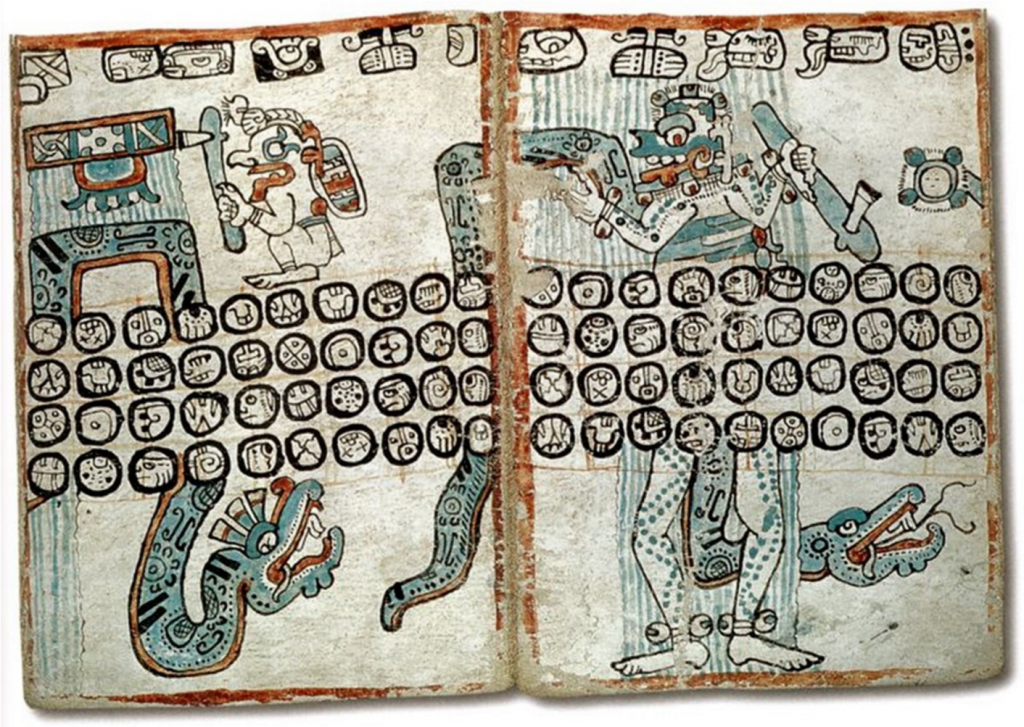
These pages from the Madrid Codex are part of the Maya version of the 120-day agricultural almanac known as the Sacred Round. Apic / Hulton Archive / Getty Images, credit: Thoughtco
The Popol Vuh is the story of the creation of the Mayan world and was first translated by Dominican friar Francisco Ximénez, against orders of the Catholic Church that it, along with all of the other Mayan documents, be destroyed as heresy.
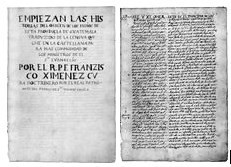
Father Ximénez’s manuscript contains the oldest known translation of the Popol Vuh. It is mostly written in parallel K’iche’ (Quishe) and Spanish. Many agree that the original story was spoken in the form of a very long epic poem. However, through time and translations, it has grown to be presented as four books with a preamble, and is still being studied today, as it is currently used in the land of the K’iche’ to help them in their religious efforts and political sovereignty.
The preamble introduces our two heroes, the twin grandsons of Xpiyacoc and Xmucane. It tells of the initial creation, or measuring of the earth, by Heart-of-Sky, and the reason for it. It reads, in part, through one translation:
THE CREATION
Here is the story of the beginning, when there was not one bird, not one fish, not one mountain.
Here is the sky, all alone. Here is the sea, all alone.
There is nothing more no sound, no movement.
Only the sky and the sea.
Only Heart-of-Sky, alone. And these are his names:
Maker and Modeler, Kukulkan,
. . .
Book One is the account of the creation of living beings. Animals were created first, followed by humans. The first humans were made of earth and mud, but soaked up water and dissolved. The second humans were created from wood. They were all flat-faced and couldn’t speak the praises of Heart-ofSky and he sent a huge hurricane to wipe them all out. However, some escaped and were turned into monkeys. There is also the story of Vucub-Caquix (meaning, Seven Macaw). He was a large bird demon that dwelt on the surface of the world after the flood. Hunahpu (or Hun-Ahpu) shot Seven Macaw with a blow gun.
This was taken from a Classic Mayan vase picturing Mayan mythology. Vucub-Caquix dwelled on the surface of the world, even though he was from the twilight world between the earth and the moon. His name represents the world between the former or first-world creation and the new or present one. VacubCaquix pretended to be the sun and moon of the twilight time (his name also refers to the seven stars in the Big Dipper). Even though this false sun-moon bird was shot out of his tree with a blowgun by Hun-Ahpu, one of the Maya Hero Twins still managed to sever our hero’s arm.
Finally, however, the demon was deprived of his teeth, his eyes, his riches and his power. Even wounded, he was able to escape into the twilight world to father a set of sons himself. Together, the (good guy) Twins become the true sun and moon of the present creation. The episode is only loosely connected to the main tale of the Twins, and is varied by other Mesoamerican hero myths.
In Book Two, our hero twins plot a plan to kill Vacub-Caquix and his two sons, Zipacna and Cabracan. There is an epic battle and the good guys come out as victors and heroes as the deaths of these bad guys restores order, balance, and harmony to the world. In the story, Vacub-Caquix invites the brothers down (relative term here) into Xibalba for a game of ball with a
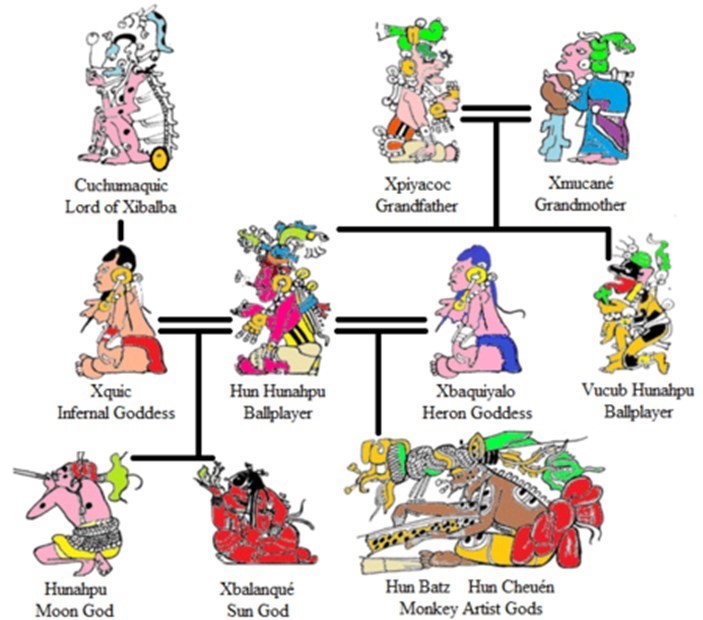
A family tree of gods and demigods. Vertical lines indicate descent. Horizontal lines indicate siblings. Double lines indicate marriage.
lot of deceit. Xibalba is described in the Popol Vuh as a court below the surface of the earth. It is associated with death and with twelve gods or powerful rulers known as the Lords of Xibalba. The first among the Maya Death Gods ruling Xibalba were Hun-Came (“One Death”) and Vucub-Came (“Seven
Death”), though Hun-Came is the senior of the two.
The remaining ten Lords are often referred to as demons and are given commission and domain over various forms of human suffering. For example: to cause sickness, starvation, fear, destitution, pain and ultimately death. These Lords all work in pairs. For example: Xiquiripat (“Flying Scab”) and Cuchumaquic
(“Gathered Blood”), who sicken people’s blood. Then there is Ahalpuh (“Pus Demon”) and Ahalgana (“Jaundice Demon”).
These two cause people’s bodies to swell up, and so on.
Xibalba was rife with tests, trials, and traps for anyone who came into the city. Even the roads to Xibalba were filled with obstacles. The city was home to at least six deadly houses and each was a trial for any visitor. The first was Dark House. As you can guess it was a house that was completely dark inside. The second was Rattling House or Cold House, full of ice and rattling hail. The third was Jaguar House, filled with hungry jaguars. The fourth was Bat House, filled with scary, shrieking vampire bats, and the fifth was Razor House, filled with blades and
…Popol Vuh
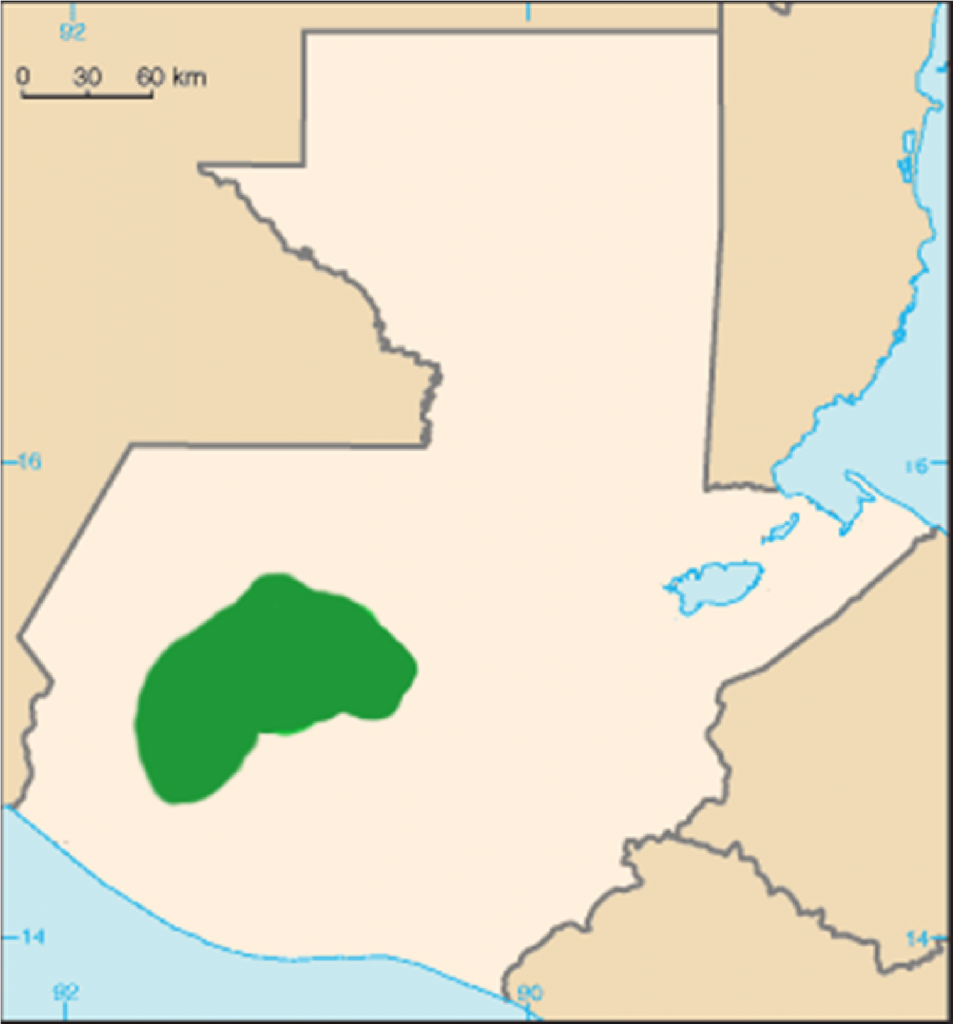
The land of K’iche’ in Guatemala today
razors that moved about of their own accord. The sixth house was a test. It was filled with fires and heat. The purpose of these tests was to either kill or humiliate people placed into them if they could not outwit the test.
In Book Three, the father and uncle of The Hero Twins, HunHunahpu and Vucub-Hunahpu, sons of Xmucane and Xpiacoc are murdered at a ball game in Xibalba. Hun Hunahpu’s head is placed in a Calabash tree, where it spits in the hand of Xquiq, impregnating her. She was the daughter of one of the lords of Xibalba, called Cuchumaquic.
She leaves the underworld to be with her Mother-in-law, Xmucane, who doesn’t believe her or her chastity. Most of this book is about her trials and how she overcame these obstacles to become the mother of the Maya Hero Twins, Hunahpu and Xbalanque. Her sons then challenge the lords who killed their father and uncle, succeeding and becoming the sun and the moon. Sort of a vicious circle, but it sure beats day-time television soap operas.
Book 4 tells of the rewards of those humans of the maize that make it through the maze of houses and trapped roads, etc. Those that made it got immortality for their loyalty. Then they got wives to satisfy their contentment and went to live in the land of K’iche’ which exists today. It also introduces Gucumatz which, along with the K’iche’, is the subject of next month’s article.
The full edition or view it online
—
Kirby was born in a little burg just south of El Paso, Texas called Fabens. As he understand it, they we were passing through. His history reads like a road atlas. By the time he started school, he had lived in five places in two states. By the time he started high school, that list went to five states, four countries on three continents. Then he joined the Air Force after high school and one year of college and spent 23 years stationed in eleven or twelve places and traveled all over the place doing administrative, security, and electronic things. His final stay was being in charge of Air Force Recruiting in San Diego, Imperial, and Yuma counties. Upon retirement he went back to New England as a Quality Assurance Manager in electronics manufacturing before he was moved to Production Manager for the company’s Mexico operations. He moved to the Phoenix area and finally got his education and ended up teaching. He parted with the university and moved to Whidbey Island, Washington where he was introduced to Manzanillo, Mexico. It was there that he started to publish his monthly article for the Manzanillo Sun. He currently reside in Coupeville, WA, Edmonton, AB, and Manzanillo, Colima, Mexico, depending on whose having what medical problems and the time of year. His time is spent dieting, writing his second book, various articles and short stories, and sightseeing Canada, although that seems to be limited in the winter up there.
